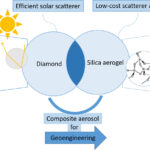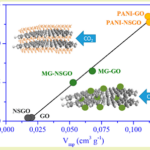January 23, 2025 Global Warming
It is a fundamental and economically damaging fallacy to claim that wind and solar renewable energy is cheap and free of environmental impact.
The Role of Nuclear Energy in a Globalized World
Reference Study
Lars Schernikau (2024). The Role of Nuclear in the Global World of Energy. Oxford Institute For Energy Studies, Issue 139, Quarterly Journal for Debating Energy Issues and Policies.
The world’s first nuclear power plant began operating near Moscow in 1954.
In the decades that followed, hundreds of nuclear reactors were built around the world, with the United States, France, and China leading the way, accounting for about half of today’s global installations.
About 90 percent of the nuclear reactors in operation today were built in the 1970s and 1980s, with a global average age of about 32 years.
In addition, more than 90 percent of U.S. reactors have been extended to operate for up to 60 years.
Worldwide, there is about 420 GW of installed nuclear capacity, which is expected to increase to about 620 GW by 2050.
Currently, about 5 percent of total electrical capacity, or 8.6 TW, is nuclear.
The more than 400 nuclear reactors contribute nearly 10 percent of global electricity generation, or about 29,000 TWh in 2022 (Figure 1).
(Only about 40 percent of the world’s primary energy, or more than 170,000 TWh, is used for electricity generation ; the remaining 60 percent is used for industry, heating, and transportation).
[1] IEA WEO (2023), https://www.iea.org/reports/world-energy-outlook-2023.
Note : The author writes “renewable” when in fact they are not really “renewable” when considering their life cycle, raw material and energy inputs, and overall environmental impact.
For example, hydroelectric power has a large environmental impact.
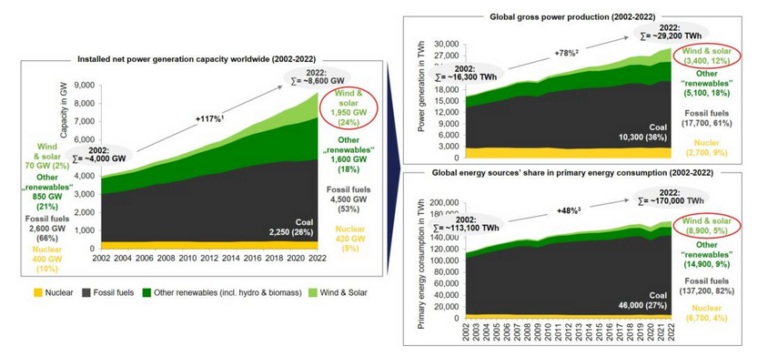
Nuclear power is the most energy-efficient energy source, with an energy return on investment (eROI) probably twice (and possibly more) than coal, gas, and hydro.
Nuclear power is also one of the safest forms of energy production, measured in terms of deaths per MWh generated, and arguably has the least environmental impact.
This makes it all the more surprising that nuclear power currently accounts for a relatively small share of global electricity generation.
Even more puzzling is the fact that the share of nuclear power has been steadily declining because nuclear power plant construction has not kept pace with the growing global demand for electricity.
While nuclear power accounted for nearly 17 percent of global electricity generation in 2002, this share had fallen to 9 percent by 2023, while absolute generation remained essentially unchanged at about 2,700 TWh (Figure 2).
However, this could change as a result of the agreements reached at COP28, where 22 countries committed to tripling nuclear power generation by 2050.
This would mean an increase of about 30 GW per year by 2050, five times more than in the last decade, in line with the boom of the 1980s.
But will this shift solve the global energy problem ?
In fact, the demand for primary energy is likely to increase by another 40-50% by 2050, given a possible increase in world population of around 20% and a consequent increase in per capita energy consumption of around 25%.
On the other hand, the demand for electricity will continue to grow faster and faster due to the continuous demand (not always energy efficient) to “electrify everything”.
It is therefore desirable for nuclear power to make a significant contribution to this growth.
However, in absolute terms, other more “traditional” sources such as coal and gas, but also wind and solar, if they continue to receive direct and indirect support from governments, will still account for most of the increase in electricity generation capacity.
[2] The global average funding for wind and solar is far higher than for coal, gas, or nuclear. For more information, see Robert Bryce’s article in Substack : “Solar is getting 302 times more funding than coal, gas, or nuclear“.
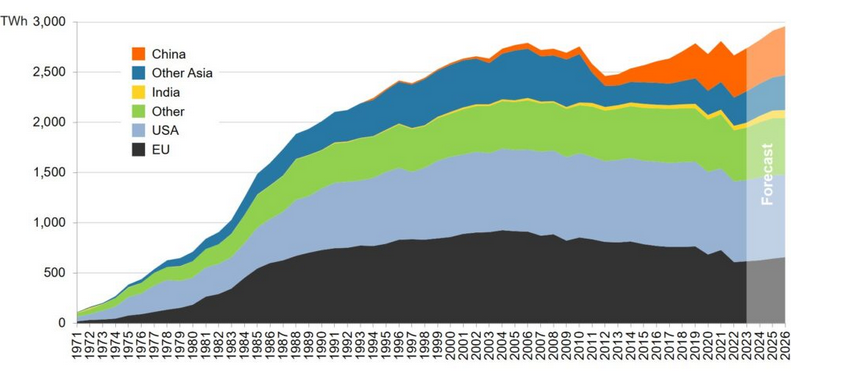
Fuels and Nuclear Technology
Uranium is abundant worldwide, both in granite rocks and dissolved in the oceans, but it is not entirely usable for energy production.
In theory, the amount of uranium available would be sufficient to meet all of the world’s energy needs.
However, there are currently many concerns about the availability of uranium, enriched uranium, and nuclear fuel assemblies. [3]
More than 50 percent of commercially exploitable uranium resources are located in Australia, Kazakhstan, and Canada [4] ; Kazakhstan mines more than 40 percent of the world’s uranium.
The United States is now completely dependent on uranium imports, and even Russia consumes twice as much as it produces.
Serious concerns about the availability of nuclear fuel could obscure some interesting technological advances in the future, such as fourth-generation or small nuclear reactors, or it could spur further funding for thorium reactors.
The world’s first fourth-generation high-temperature gas reactor nuclear power plant, a “pebble-bed” reactor operated by the China National Nuclear Corporation, began operating in late 2021. [5]
Thorium-based nuclear power has several advantages, including greater fuel availability, higher efficiency, lower waste generation, and low potential for military use.
Small modular nuclear reactors (SMRs) are an exciting development because they could enable the construction of lower-cost, high-volume, standardized mini-reactors.
SMRs are generally defined as reactors smaller than 300 MW, with a thermal and/or electrical power generation capacity of up to 5 MW.
There are currently about 70 SMR projects under development worldwide.
[3] Nuclear News Wire (2023), Sull’orlo di una crisi, https://www.ans.org/news/article-4909/on-the-verge-of-a-crisis-the-us-nuclear-fuel-gordian-knot/.
[4] Fonte : World Nuclear Association.
[5] Global Times (2021), https://www.globaltimes.cn/page/202112/1242878.shtml.
Costs
The cost of nuclear power plants varies widely because of the time required to build them, ranging from $2 million to $13 million per MW, with construction times ranging from 4 to 25 years.
Forty percent of nuclear power plants are typically developed within six years of design, mostly in China, and most of the low-cost plants have been built in China, India, and South Korea.
The most expensive nuclear power plants are (or will soon be) in the United States and the United Kingdom.
The high costs and construction delays in the West are mainly due to local regulations that, according to author Lars Schernikau, cannot be justified economically and, more importantly, scientifically.
It is hoped that the recent increase in support for nuclear power, much discussed at the recent COP28, will change this.
Looking at the Full Cost Of Electricity (FCOE) or Levelized Full System Cost Of Electricity (LFSCOE), nuclear power is probably the most expensive of all the popular methods of generating electricity in the world (Figure 3)
In any case, it is still significantly cheaper than wind and solar and, most importantly, provides zero CO₂ emissions.
Note : The author of this study supports Idel’s Total System Cost principle and its impact on the cost of wind and solar compared to nuclear, coal or gas [6].
USC = Ultra Super Critical, LCOE = Levelized Cost of Electricity, LFSCOE = Levelized Full System Cost of Electricity.
[6] The author disagrees with Idel’s 2022 numbers for coal and gas because coal has lower costs on average than gas.
For example, BloombergNEF recently confirmed that coal has lower costs than gas, although actual costs may vary from country to country.
BloombergNEF (2023) : https://about.bnef.com/blog/cost-of-clean-energy-technologies-drop-as-expensive-debt-offset-by-cooling-commodity-prices/
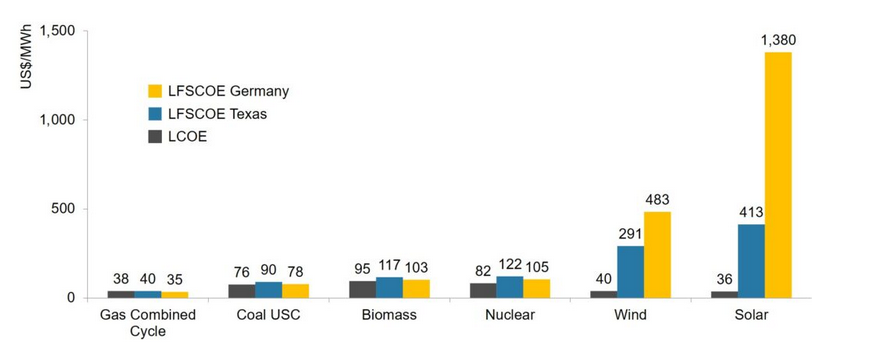
The claim that wind and solar renewable energy is cheap and environmentally benign is fundamentally flawed and harmful from an energy economics perspective.
In fact, LCOE is not appropriate for comparing intermittent and dispatchable energy sources.
The LCOE is a microeconomic rather than a whole-system indicator, excludes seven cost categories (listed below), and therefore can never be an accurate metric on which governments can base future energy policy decisions.
It does not consider or account for intermittency, low natural capacity factors, the correlation between wind and solar availability across continents, and the imbalance between supply and demand at the local level.
Obvious costs not included in the LCOE include, but are not limited to :
Backup or long term energy storage : Wind and solar require at least 100% backup or storage for every MW installed. This is due to energy losses in backup and storage systems and the fact that more than one backup/storage system is typically required, e.g., for short- and long-term energy storage.
Grid integration : includes transmission, distribution, balancing and conditioning costs.
Non-obvious costs not included in the large LCOE include :
Efficiency losses : greater use of wind and solar energy results in less use of backup or grid systems.
Space requirements [8] : are determined by the low energy density (per m²) of wind and solar. In fact, the use of thousands of km² to capture the diffuse energy of the sun and wind has a high economic and environmental price to pay.Recycling costs : determined by the low energy density (per kg) and short lifetime of wind and solar energy.
Environmental costs during operation : include damage to flora and fauna and adverse climate effects of energy production such as heating, wind use and weather changes.Inefficiency of raw materials and net energy along the entire production chain : includes production, processing, transportation, valorization, implementation and recycling, as well as environmental impacts independent of energy production itself.
Considering the aforementioned issues of grid integration, backup/storage, lifetime, energy density and, of course, intermittency, wind and solar are by far the most expensive.
In addition, the cost of the entire wind and solar system may still grow exponentially, as has been indirectly confirmed by the Organization for Economic Cooperation and Development (OECD), the Institute for International Energy Economics (IEEJ), the International Energy Agency (IEA), and other economic institutions working in the energy sector.
[7] Schernikau (2024), https://www.eurasiareview.com/17012024-the-energy-trilemma-and-the-cost-of-electricity-oped/.
[8] Schernikau et al. (2022), https://dx.doi.org/10.2139/ssrn.4000800.
Conclusions
It appears that the COP28 call to promote and support nuclear power generation globally may be an appropriate choice for the future.
The commitment to triple nuclear power generation from 2022 (2,700 TWh, or 9 percent of about 29,000 TWh globally) would result in about 8,000 TWh by 2050.
If global electricity demand continues to grow, the International Energy Agency’s World Energy Outlook 2023 estimates total production of 50,000 TWh by 2050.
In this case, the share of nuclear power would rise to just over 15 percent, still far from the 17 percent of 2002.
Thus, from a macroeconomic point of view, there is no realistic scenario in which nuclear power will be able to meet the growing demand for energy in the next 30 years, due to the following factors : (1) lead time ; (2) costs and regulations ; (3) huge volume of energy demand growth.
The discouraging and unpopular truth is that even if the COP28 targets for nuclear power were met, a perhaps necessary but still very risky choice, such energy would meet only a fraction of the growth in demand by 2050, and as a result oil, coal, gas, hydro, “renewables” and all other energy-intensive sources of supply will always have to be relied upon.










